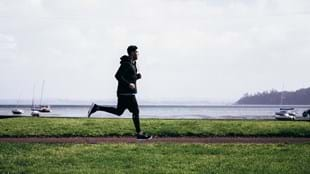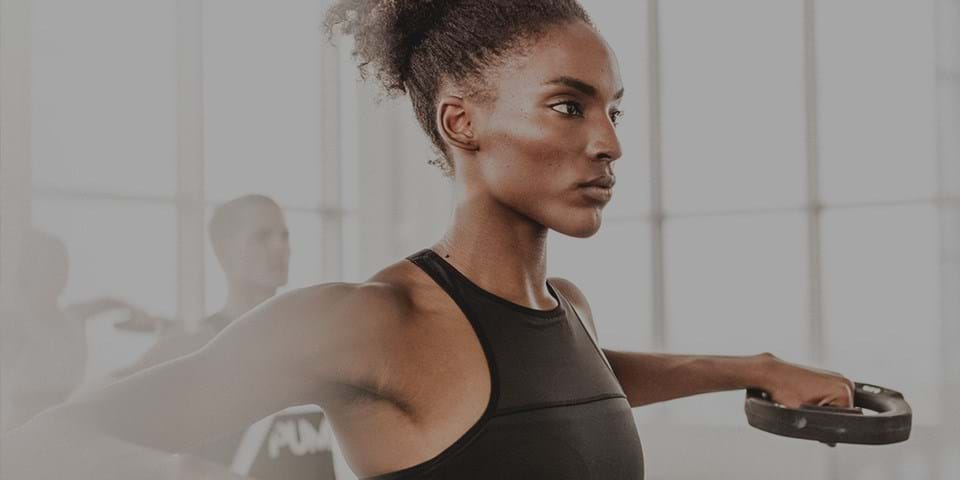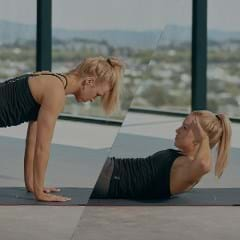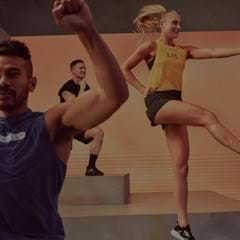MARGO WHITE: You write that we’re born to run. Convince me.
VYBARR CREGAN-REID: The idea that we’re born to run comes from a wonderful book, Born to Run, by Christopher McDougall, who kick-started interest in this idea. His book comes out of the science done by biologist Dennis Bramble and paleoanthropologist Daniel Lieberman, who looked at the mechanics of our bodies, and the ways in which they’re specifically optimized for running.
For example?
If you’re reading this interview on an iPad and shake the screen up and down, you won’t be able to read it. Your eyes won’t be able focus. But if you shake the screen from side to side, which is the kind of lateral movement that the head does during a run, when it bobs from side to side, you will be able to read it. That’s because of a little set of bones in our inner ear that house the vestibulocochlear nerve, which means our brain can tell our eyes what to do so that we can see when we’re in motion – if our head moves to the right, our eyes move to the left, and vice versa. Primates don’t have this, but Homo erectus, from about 1.9 million years ago, did, and we’ve inherited it.
They also had toes that were quite short, so were economic. They had a big toe that was very powerful and independent and allowed them to propel themselves forward. They had Achilles tendons (which most other primates lack). You don’t need an Achilles tendon to walk, but it stores power when your body goes down in a stride, which can then be released when you toe off, and that helps propel you forward. The uniquely human arch in the foot also helps this, too. There are many more examples, but all these evolutionary tweaks that optimize us for running are there, ready to go, in our DNA.
But we live in an age optimized for sitting, rather than running...
Yes, the environment that was waiting for early humans was the African savannah, and we thrived on it. That environment didn’t have any chairs. It involved very little sedentary work. And it was one in which our muscles, all our tendons, were being used actively and frequently. So it meant their bodies were getting sustenance.
What we have now, is an environment in which our fingers travel over a keyboard about three miles a day, and our feet about half a mile. It’s absurd; think of all the time you spend in sedentary activities. If you just performed moderate activities for that amount of time, your bone density would be different, tendons would be thicker, and muscles would be stronger. So we are training our bodies to be weakened by modern life, with a level of commitment that if we were training for the Olympics, we’d win.
This is something you’re exploring in your next book, “Primate Change, how the world we’ve made is remaking us”?
Yes, which is coming out in September. I've got a whole section on sitting, and the history of chairs. We’ve not really been sitting for that long – only for about 150 years. Chairs have been around for thousands of years, but they were mostly used as status symbols; they were not widely adopted and people were sensible enough not to sit in them. And just because we like sitting doesn’t mean it’s good for us.
You’re a senior English lecturer, mainly in Victorian literature, and the author of Footnotes: How Running Makes Us Human. How did you end up writing a book about running?
My first book was an academic book about the oldest poem that humanity has, called the Epic of Gilgamesh, that took me many years and at the end of that process I thought, because it was an academic book, nobody is going to read this. So I decided that the next book would be about something that really fascinated me, something that was more mainstream, and that really felt new to me.
Footnotes is a running book, but I blend that with literary criticism, new nature writing, and memoir. The basic argument I’m putting forward is that we have bodies, and they need to do certain things, and if they don’t, they’re not going to be at their best.
In Footnotes you point out that there’s increasing evidence that running promotes neurogenesis. You run five to ten miles a day, but has it made you smarter?
No, not noticeably, but I’ve not noticed my hair going grey, either, so who knows? It won’t necessarily make you smarter, but will almost certainly slow the cellular degradation that is associated with ageing. It has, without doubt, made me more interested. There was something about the process of running, while writing Footnotes, which would generate ideas. Ideas would get shunted together while I was out on the trails, and I’d think, ‘oh yeah, treadmills are weird, I should look into that, I remember them being mentioned in Charles Dickens’ A Christmas Carol’. The odd history of the treadmill ended up becoming an entire chapter in the book. There were without doubt some dumb ideas, but mostly though they blossomed into paragraphs or sections. I don’t think running made me smarter, but it created the conditions in which creativity could flourish.
Are the benefits of running distinct from the benefits gained by other forms of physical activity?
There’s no easy answer for this. But if you look at the kind of benefits that different leisure activities give us, such as the neurological benefits, the physiological benefits, psychological benefits and others, outdoor running comes out best. It’s great for cardio, great for bone density, and if you’re outdoors, it’s great for being stimulated by the natural environment. So it’s not that other exercises won’t give you these benefits, but none will give you them as perfectly as running does.
Is there really such a thing as a runners’ high?
Definitely. Some people rarely get it, some people never get it, some people get it a fair bit and some people get it all the time. I used to get it more than average and I think this is because I’m a slow runner. If you drive your exercise too hard, it won’t happen. So, often the people who never get it are those really serious about their running speed, and see their run as serious training. But it turns out that not maxing out your heart rate, makes it easier for the runner’s high to happen. I’ve got a recipe for the runner’s high in the book, I devised it after speaking to several experts. You can check it out below.
It’s not about the endorphins though, is it?
For years everyone thought it was, but the scientists were quite rightly saying, no, endorphins are too big to get through the blood brain barrier, which stops us from going insane when we get an infection. But more recently, there was the discovery of a substance called anandamide, a neurostransmitter released when the endocannabinoid system is activated, which is small enough to pass the blood brain barrier. That does all the things that that the runners’ high is supposed to do.
Like what?
It makes you feel euphoric, that you could carry on forever. It has dilatory effects so your breathing slows and blood is able to flow more freely, and it also has a pain-killing component.
It’s like your body recognizing that it has reached the limits of its ability, and it just goes ‘poof’ and puts a little injection of magic into your brain and blood, which keeps you going a little bit longer. So that, if you were a Paleolithic persistence hunter, you could get the reward of the hunt. Everything usually come down to evolution. That Darwin guy was onto something.
Can you get a “runner’s high” from other forms of physical activity?
There’s no reason to suggest that you can’t. I think it’s more closely associated with running, because everyone knows the term; they don’t call it “the exercise high”. But as I say in the book, and my recipe for “runner’s high”, you also need to go off line, to switch off, and that can be harder in a gym or in an urban environment than it is in a natural environment. By natural, I don’t mean that it has to be a breathtakingly beautiful place, just some grass and a few trees.
Is running bad for your knees?
No, there’s been loads of studies done on this, but yet another study published a few weeks ago showed that levels of osteoarthritis among runners is hugely below the average of the population. So running is not bad for your knees. Not running is bad for your knees. I don’t believe that we pick up injuries when we’re running. We gather them slowly in our lives, and then we give them a chance to express themselves while we’re running. We are injuring ourselves by doing what we are both doing now, which is sitting still for long periods of time.
EXPERIENCE THE RUNNER’S HIGH
Vybarr Cregan-Reid’s recipe for the runner’s high, or more accurately, for endocannabinoid activation.
- Make sure the run is as immersive as possible.
- Ensure the run is mindful and not instrumental (performed to achieve another goal); sensory reception of the present is essential.
- Make sure the run is longer than 40 minutes.
- Don’t run too fast. The ideal is about 75 percent of maximum heart rate. Below that and your body is not likely to be stressed enough for endocannabinoid activation, but any faster than that and you will be too distracted by your exertion to notice anything happening. Cregan-Reid says: “In my experience, if I’m four steps breathing in/four steps breathing out, I’m going at about the right pace.”
- Run in a green space.

Dr Vybarr Cregan-Reid is Reader in English and Environmental Humanities at the University of Kent, and author of Footnotes: How Running Makes us Human. He is currently working on his third book, Primate Change: how the world we’ve made is remaking us, a study of the Anthropocene body and how, as we have altered the environment, it is changing us.







